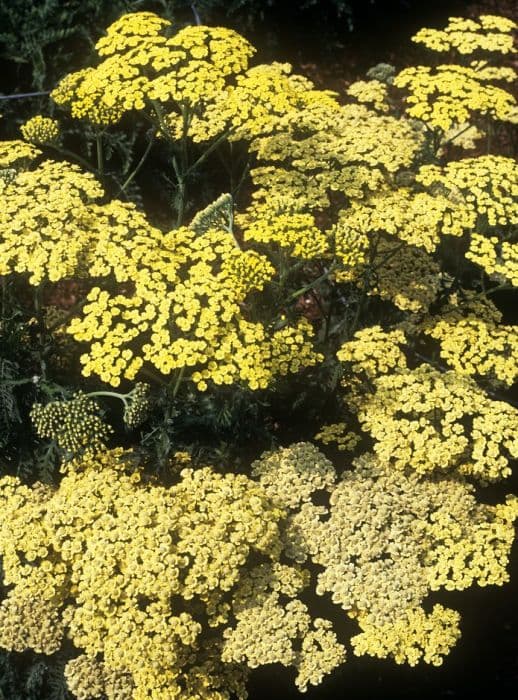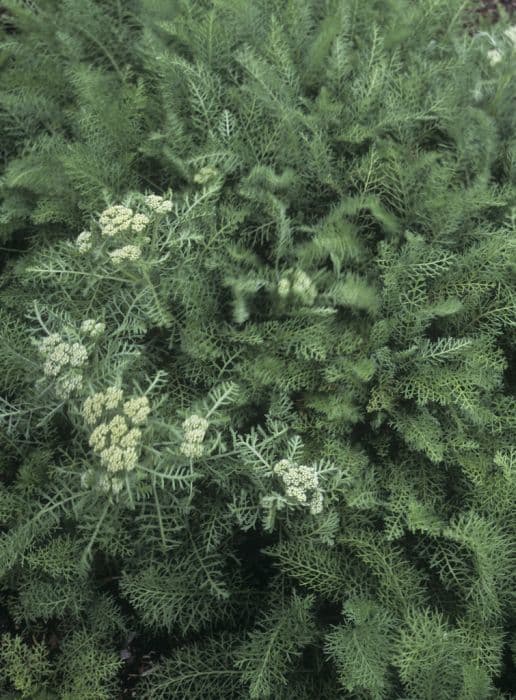Treasure Flower Gazania 'Michael'

ABOUT
Gazania 'Michael' is known for its vibrant and showy flowers. This plant produces daisy-like blooms that display a fascinating range of colors, typically featuring a mix of bright hues such as yellows, oranges, reds, and sometimes pinks or whites. The center of each flower is often a deeper color, creating an eye-catching contrast with the radiating petals. These petals may have a solid color or can exhibit striking stripes or patterns that enhance their visual appeal. The foliage of Gazania 'Michael' is also noteworthy, consisting of narrow leaves that are typically a deep green color, sometimes with a silvery or downy underside, which contributes to the overall texture of the plant. The leaves are arranged in a rosette formation at the base of the flower stalks, providing a lush backdrop for the brilliant floral displays above them. While in bloom, Gazania 'Michael' forms a carpet of color that is particularly attractive to gardeners looking to add splashes of brightness to their landscape. As an ornamental plant, it stands out in garden beds, borders, and containers, offering a continuous source of color through the blooming season when cared for properly. These features make Gazania 'Michael' a popular choice for gardens and public spaces alike, where they serve to attract pollinators such as butterflies and bees, while also providing an enduring spectacle of floral beauty for passersby to enjoy.
About this plant
 Names
NamesFamily
Asteraceae
Synonyms
Treasure Flower, African Daisy
Common names
Unfortunately, without access to up-to-date taxonomic databases post my knowledge cutoff date, I am unable to confirm whether there are new synonyms for Gazania 'Michael'. However, as of my last update, cultivar names like 'Michael' typically do not have scientific synonyms because they are specific cultivated varieties rather than naturally occurring species. Therefore, for a specific cultivated variety like Gazania 'Michael', it would typically just be referred to by its cultivar name within the species Gazania rigens or Gazania splendens, depending on the parentage of the cultivar. Gazania 'Michael' itself would not have synonyms.
 Toxicity
ToxicityTo humans
Gazania 'Michael', commonly known as Treasure Flower, is not widely known to be toxic to humans. However, as with any plant, sensitivity varies from person to person and certain individuals might experience mild reactions if they ingest parts of the plant or come into contact with its sap. Should an allergic reaction or ingestion occur, it is recommended to seek medical advice, especially if symptoms such as nausea, vomiting, or skin irritation develop. It is always advisable to keep plants out of reach of children who might accidentally consume plant material.
To pets
Treasure Flower, the common name for Gazania 'Michael', is not listed as toxic to pets. Although it is generally considered non-toxic, ingestion of any plant material may lead to gastrointestinal upset in some animals due to the novelty of the substance and mechanical irritation. Symptoms could include vomiting or diarrhea if ingested in significant quantities. If you suspect your pet has eaten a large amount of the plant and is showing adverse symptoms, it is best to consult a veterinarian.
 Characteristics
CharacteristicsLife cycle
Perennials
Foliage type
Evergreen
Color of leaves
Green
Flower color
Mixed
Height
0.5 feet (15 cm)
Spread
1 foot (30 cm)
Plant type
Herb
Hardiness zones
9
Native area
South Africa
Benefits
 General Benefits
General Benefits- Enhances Garden Visuals: Adds vibrant colors to the garden with its daisy-like flowers.
- Attracts Pollinators: Draws in bees and butterflies, supporting local ecosystems.
- Drought Tolerant: Requires minimal watering, which conserves water and reduces maintenance.
- Easy to Grow: Gazania is hardy and adaptable, making it suitable for gardeners of all skill levels.
- Long Blooming Season: Provides color throughout the warm seasons, often from spring to fall.
- Edging and Ground Cover: Can be used for borders or to cover bare spots in the landscape.
- Container Gardening: Well-suited for pots and containers, offering flexibility in garden design.
- Sun Tolerance: Thrives in sunny locations, making it ideal for sunny gardens and areas.
- Soil Adaptability: Can grow in a wide range of soil types, from sandy to loamy.
- Deer Resistant: Less likely to be eaten by deer, ensuring the garden remains intact.
 Medical Properties
Medical PropertiesThis plant is not used for medical purposes.
 Air-purifying Qualities
Air-purifying QualitiesThis plant is not specifically known for air purifying qualities.
 Other Uses
Other Uses- Gazania flowers can be used as a natural dye for fabrics, giving a range of colors from yellows to browns depending on the mordant used.
- The petals of Gazania flowers can be included in potpourri mixes for their color and faint fragrance, adding beauty to the visual appeal of the mixture.
- Gazania can be used as a ground cover to help control erosion on slopes due to its ability to spread and stabilize the soil with its root system.
- They serve as a natural indicator plant for gardeners, as they close up at night or during overcast days, signaling low light conditions.
- Gazania is often used in children's garden projects due to its bright colors and ease of growth, which can help stimulate an interest in horticulture.
- These flowers can be used in crafting, specifically for making floral arrangements or pressing for art projects and bookmarks.
- Gazania, with its dense growth, can be planted to outcompete and suppress the growth of weeds in garden beds.
- When planted strategically, Gazania can be used as a natural pathway edging, highlighting walkways and borders with their vibrant colors.
- Dried Gazania flowers are sometimes used in ornament making, like creating decorative wreaths and door hangings.
- The sturdy, low-lying nature of Gazania makes it a suitable option for creating living mulch, which helps retain soil moisture and adds organic matter as it decays.
Interesting Facts
 Feng Shui
Feng ShuiGazania is not used in Feng Shui practice.
 Zodiac Sign Compitability
Zodiac Sign CompitabilityGazania is not used in astrology practice.
 Plant Symbolism
Plant Symbolism- Beauty and Diversity: Often called "Treasure Flower," Gazanias come in a variety of vibrant colors, symbolizing the beauty that diversity brings into the world.
- Cheerfulness: With their bright and sunny appearance, Gazanias are a symbol of cheerfulness and positivity, often lifting the spirits of those who gaze upon them.
- Perseverance: Gazanias are hardy plants that can thrive in challenging conditions, symbolizing the trait of perseverance in adversity.
- Attraction and Admiration: Their unique and bold appearance can symbolize attraction and admiration, making them an appropriate gift for someone you are drawn to or appreciate deeply.
 Water
WaterTreasure flowers, known widely as Gazanias, should be watered moderately. During the growing season, they require a thorough watering every week, provided they are not receiving sufficient rainfall. Ensure that each time you water, you do so deeply, which typically means using about 1-2 gallons of water for outdoor plants to encourage deep root growth. Reduce watering in the winter months, allowing the soil to dry out between waterings, to replicate their natural drought-tolerant environment. Overwatering can lead to root rot, so ensure that your Gazania 'Michael' is planted in well-draining soil.
 Light
LightGazania, also known as Treasure flower, thrives in full sun conditions and will benefit from being placed in a spot where it can receive at least 6-8 hours of direct sunlight each day. These flowers enjoy the heat and light, which encourages them to open up and show their vibrant colors. Avoid planting them in shaded areas, as this can inhibit flowering and make them prone to disease.
 Temperature
TemperatureGazanias, or Treasure flowers, prefer warm temperatures and can tolerate a wide range from about 40 to 100 degrees Fahrenheit. They thrive in typical outdoor garden conditions during the growing season and can handle minor frosts, but prolonged exposure to temperatures below freezing can be damaging. The ideal temperature range for promoting the best growth and flowering is between 50 and 75 degrees Fahrenheit.
 Pruning
PruningGazanias, commonly known as Treasure flowers, should be deadheaded regularly to encourage continuous blooming. Pruning is best done by cutting off the spent flowers at the base of their stems. Perform a more extensive pruning in the early spring or late fall, removing any dead or damaged foliage to promote vigorous growth. Typically, pruning gazanias every few weeks during the blooming season keeps them looking tidy and may stimulate further blooms.
 Cleaning
CleaningAs needed
 Soil
SoilGazania, commonly known as Treasure Flower, thrives in well-draining soil with a light, sandy composition, which mimics their native South African habitat. A suitable soil mix can be made by blending two parts sand or grit with one part standard potting soil to ensure good drainage, with a pH range of 6.0 to 6.5 which is slightly acidic to neutral.
 Repotting
RepottingTreasure Flowers, generally, do not require frequent repotting as they prefer to be a bit root-bound. Repotting can be done every 2-3 years or when the plant has outgrown its current container, ensuring to only slightly increase pot size.
 Humidity & Misting
Humidity & MistingTreasure Flowers do well in average household humidity levels; they do not require high humidity environments. Typical room humidity ranges from 40-60% which is adequate for these drought-tolerant plants.
 Suitable locations
Suitable locationsIndoor
Place in sunny spot, well-draining soil, less frequent watering.
Outdoor
Full sun exposure, well-draining spot, protect from extreme cold.
Hardiness zone
9-11 USDA.
 Life cycle
Life cycleGazania 'Michael', commonly known as Treasure Flower, begins its life cycle as a seed, germinating in warm conditions with plenty of sunlight. After germination, the seedling develops its first set of true leaves and begins to establish a root system. As it enters the vegetative stage, the plant grows rapidly, producing more leaves and shoots, and increasing in size. Upon reaching maturity, the Gazania produces vibrant, daisy-like flowers, usually in the warmer months, attracting pollinators for reproduction. After pollination, flowers develop into fruiting bodies that contain seeds. When the seeds are mature, they are dispersed by wind or other means, completing the cycle when they germinate to produce new plants.
 Propogation
PropogationPropogation time
Spring-Early Summer
Propogation: Gazania 'Michael', commonly known as Treasure Flower, is typically propagated through seeds. The optimal time for sowing Gazania seeds is in the spring, after the danger of frost has passed, when the soil has warmed up to at least 60-70 degrees Fahrenheit (15.6-21.1 degrees Celsius). The propagation process involves sowing the seeds on the surface of a well-draining soil mix and lightly covering them with a fine layer of soil or starting mix. They require adequate sunlight to germinate, which usually takes 7-14 days. It's important to keep the soil moist but not waterlogged to encourage healthy seedling growth. Once the seedlings are large enough to handle, they are usually transplanted to their final growing location, ensuring they are spaced far enough apart to allow for mature growth.









